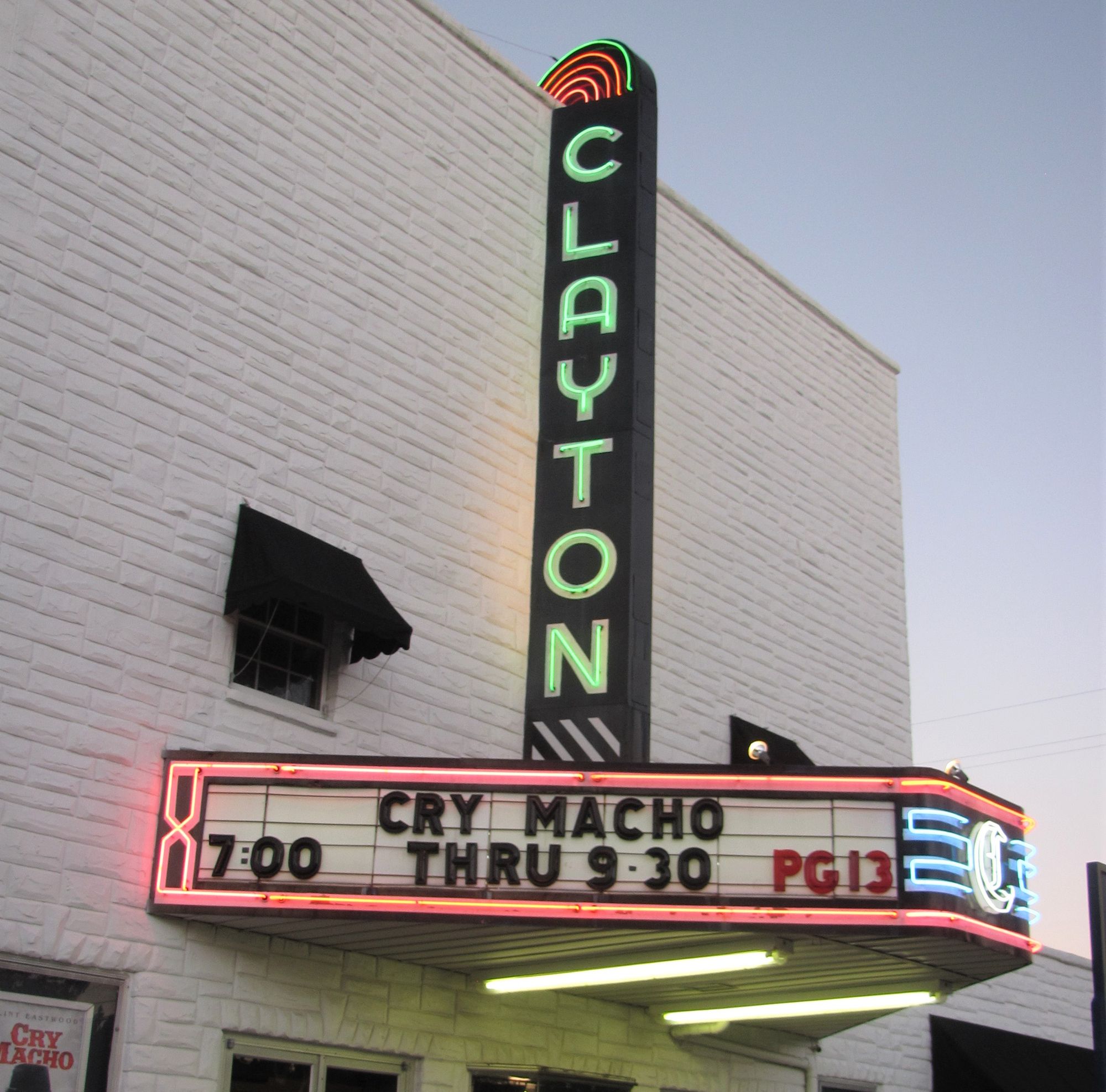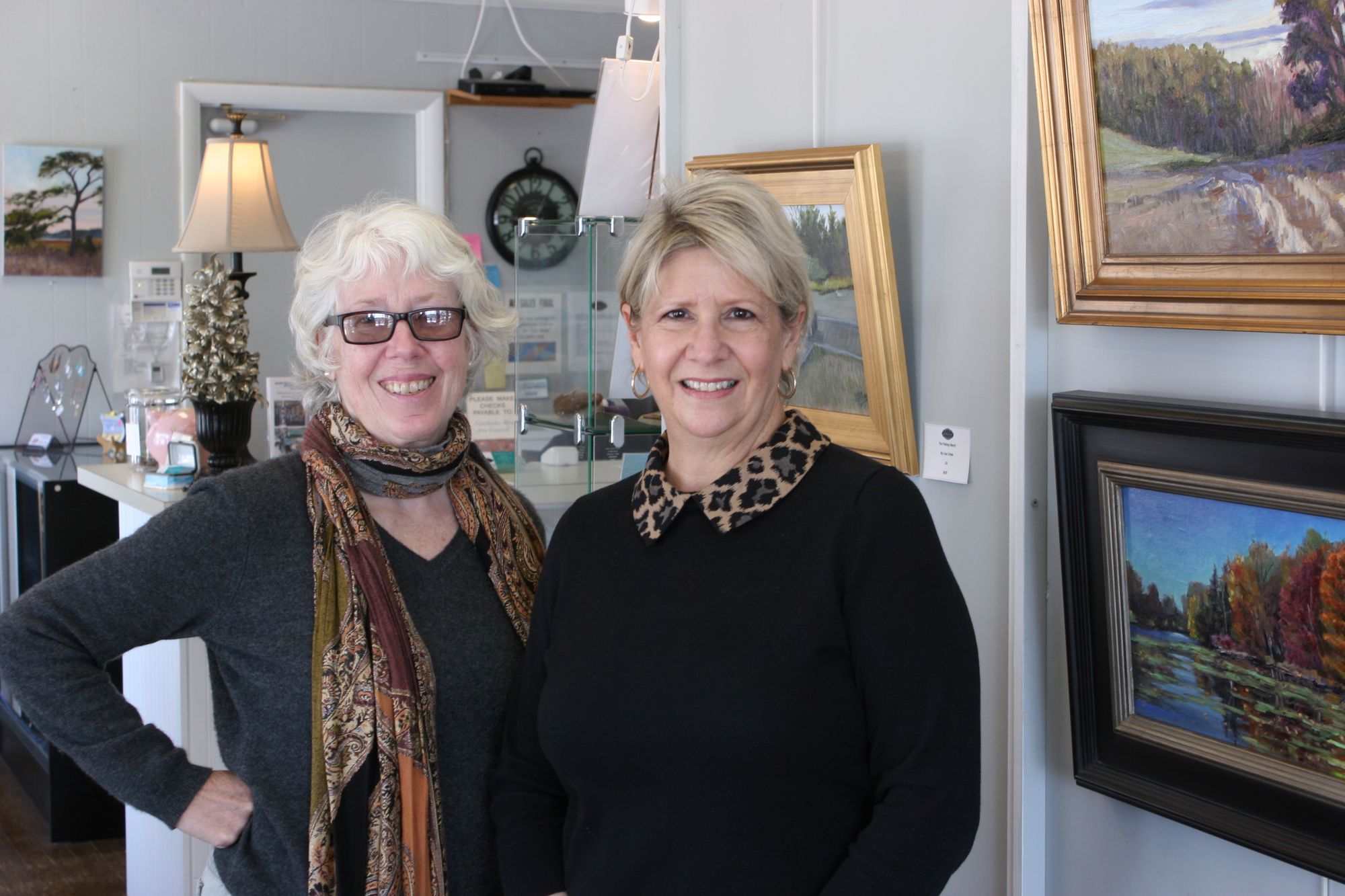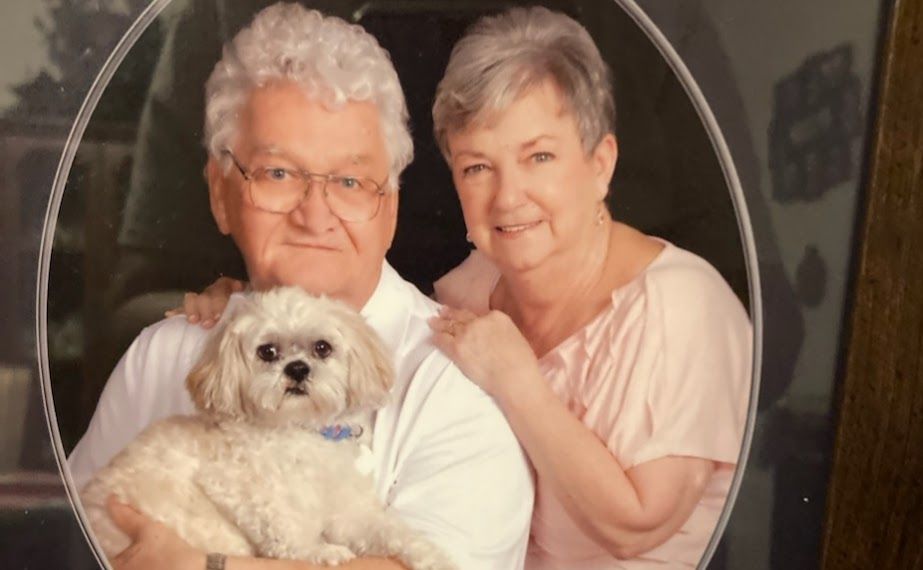Georgetown Oyster Eat: The world's weirdest bluegrass concert?
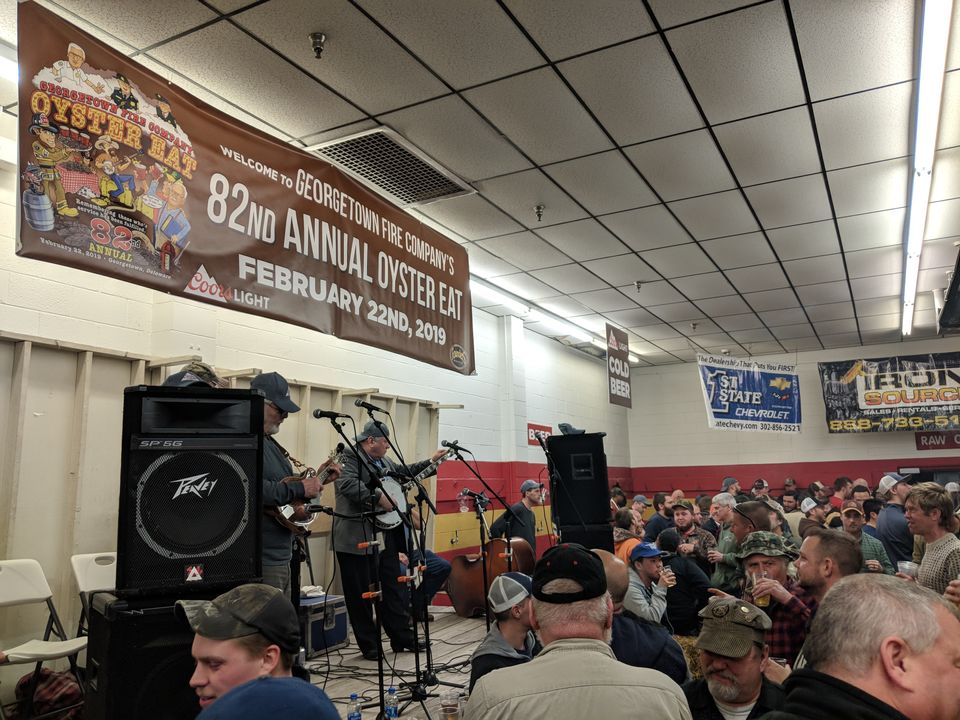
Their stage is a wooden wagon with straw bales piled around it, and their audience spends the concert in shouted conversation, while drinking beer and shoveling down oysters.
Dean Sapp and the Harford Express have 21 albums to their name and take their bluegrass music up and down the East Coast. Also, for more than 30 years they’ve spent one night of the year at the Georgetown Fire Company’s annual oyster eat.
It’s a rather striking change of pace.
“We liked the atmosphere so much that we just went back every year,” Sapp said recently at his music store off Route 40 in Elkton, Maryland.
The band bowed out for the 2022 Oyster Eat, held this past Friday, but Sapp said he’s not ruling out returning in the future. (Old Town Flood out of Baltimore did the bluegrass honors this year.)
It was with a heavy heart that they gave up the gig this year, guitar player Tom Valiquette said. “We had a great time.”
They’ve learned the intricacies of the Oyster Eat tradition over the years, even as they’ve become woven into that tradition.
“There’s a script to that whole thing,” Sapp said. “They open the door at 8 o’clock sharp. The band had better be playing when they open the door. And you play from 8 o’clock to midnight. Midnight on the dot. The overhead doors go up, in comes the Bobcats, and they clean the place out in about 20 minutes.”
It’s an audience that knows what it wants musically, too, and that is: “Rocky Top,” “Foggy Mountain Breakdown,” “Fox on the Run,” and “Country Roads” (for loud singalong purposes).
“We had to play those at least five times a night,” Sapp said.
“The drunker they get, the more they want to hear it. And then they sing along with you.”
A venue like no other
The Georgetown Oyster Eat is not your typical fire company benefit dinner. Yes, it does benefit the volunteer fire department, but that’s pretty much where the similarity with other fundraisers ends.
Firefighters empty the building of trucks and put down sawdust all over the floor. Long wooden tables line the room – well, they’re actually more standing troughs with a hole in the middle to toss empty shells. A long line of men camps outside the doors, waiting for the cue to surge forward.
“When that clock hit 8 and they busted those doors open, it was like the running of the bulls in Spain, they just used to pour through that door,” Valiquette said. “And it instantaneously got loud.”
It’s a traditionally male event, although that's not a hard and fast rule – most years a brave woman or two stops in. (The Lewes Fire Department usually holds a corresponding, women's shrimp feast that has its own reputation for a little rowdiness.)
The crowd of men, which one volunteer said approaches 1,000 some years, is almost shoulder to shoulder at times. It can be hard to wedge in and get a spot at the oyster trough. A veteran oyster eater will make sure he’s had his fill before giving up the hard-earned place, or tag team with a friend who can give it back later. But there’s plenty of other food for those waiting, and this too is enshrined in tradition: egg salad sandwiches, hot dogs and popcorn. While there’s soda and bottled water, most people opt for the all-you-can-drink beer. A lot of it.
The constant din, amped up by the beer, is punctuated by shouts of “hot stuff” as firefighters bring out baskets of steaming oysters in the shell and sling them down the troughs. Above it all floats a cigar smoke haze and the sound of bluegrass music.
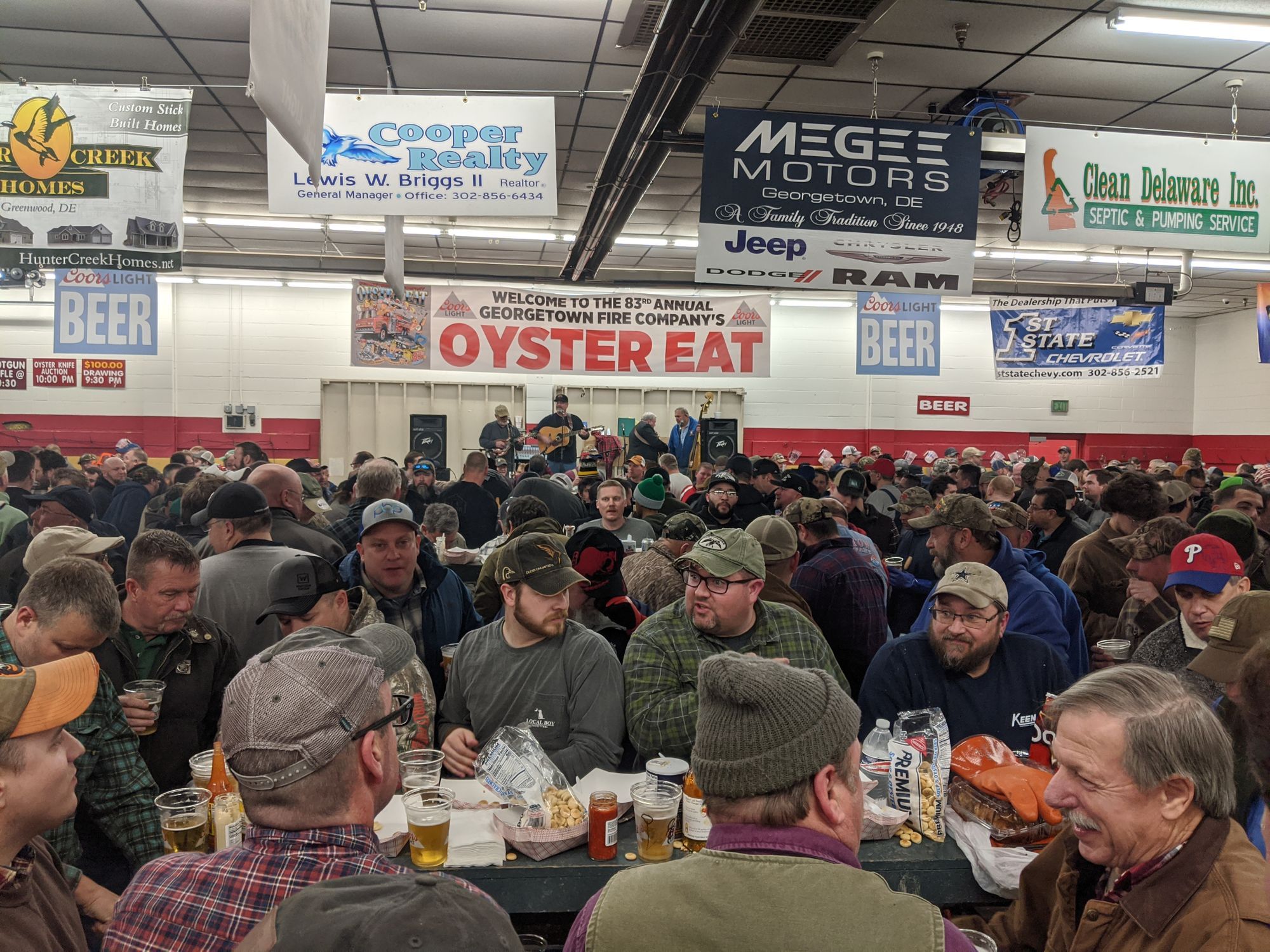
For many years, that bluegrass was courtesy of Dean Sapp and his men plugging away at what they knew would be a very long night.
The things they've seen
Your typical bluegrass concert usually doesn’t feature someone in the crowd playing spoons on the heads of dancing attendees. There are a few other small differences too.
The festivities have given the band quite a view over the years as they look out over the crowd from their wagon. A small crowd of devotees gathers around the makeshift stage early on, a sort of backwoods style mosh pit of creative “dancing,” which looks a lot like shuffling vigorously in sawdust. The same faces show up here each year like clockwork, including the spoons player, whose fellow dancers are apparently feeling little pain as he keeps time on their heads. As the evening lengthens, more people relax enough to try out their own dance moves, and some occasionally become relaxed enough to make sawdust angels on the floor in their exuberance.
For some reason, Valiquette recalls, one of the newspapers covering the event would always send a female staffer to cover it.
“You could stand up on the hay wagon and tell where exactly on the floor she was ‘cause these guys parted like the Red Sea,” he said.
Once, one of the women sent to cover the event came over and said, “Can I come up on the wagon with you guys? I gotta get out of this mess,” Valiquette said. “... She came up and sat out there for a couple hours.”
While the troughs for steamed oysters are jammed full, the line is always short at the raw oyster table. One year, Sapp spotted a man who had come up with a way to take advantage of this.
“He had like those little Bunsen burners that keeps food hot. And he was cooking his own oysters over there,” Sapp said. “He’d go over and get the raw oysters and come over and cook ‘em, and put his own sauce and stuff in there and eat it, and he was drinking moonshine.”
While the band enjoyed playing at the Eat, not all of them were oyster fans. Bobby Long, the bass player, said people sometimes brought oysters over to share and they were delicious. But Valiquette was less enthusiastic about the bivalves.
“We would stand up there and watch these folks just slurp those things down and to stand there and watch it doesn’t do a whole lot for the appetite.”
One of the band members, at least, still had an appetite after a long night of playing.
“We were tearing things apart one night and sitting on top of one of the speakers was one of these egg salad sandwiches,” Valiquette said. “And we had no idea how long that dude had been there. And (the mandolin player) reached up and he unwrapped and looked at it, and took a big old bite out of it. And we just looked at each other and shook our heads.”
Sapp said he used to bring a table along to sell some of the band’s recordings, but that didn’t always work out too well.
“There was one guy that came up there, a great old big boy, and he had a pitcher of beer … I said ‘Tom, kiss the record table goodbye. And the guy’s sloshing a little bit, and he turned around and walked away, and turned back around and he passed out right through the record table.”
The folding table, predictably, did not hold up well, but the man got a big round of applause from the crowd.
“I cleaned CDs for four days,” Sapp said, laughing. “Had sawdust all over them, and beer.”
He switched to selling CDs out of a case.
A certain atmosphere
The clouds of cigar and cigarette smoke, mixed in with beer fumes and eau de fresh oyster and homemade cocktail sauce create a memorable and persistent odor that outlasts the event.
“Everything stinks like oysters,” Sapp said.
“My wife actually would not let me come in the house,” Valiquette said. “She would put a bathrobe out in the garage, and my slippers,” and when he got home he would put his clothes straight into the washing machine.
Once, one of the former bass players accidentally preserved this essence of Oyster Eat when he put his bass guitar into its case afterward and didn’t reopen it for a while.
Then the band went to Nashville to do a recording session at a studio.
“So he brought the bass guitar and it had been almost two months since the Oyster Eat. And I guess he never thought about it. And he popped that thing open that night, and we were all standing around, and everybody bent back at once going whoaah,” Valiquette said.
“I wouldn’t be surprised if cigarette smoke came out of the center hole when he opened it.”
“It gets pretty thick in there sometimes,” Long said.
The noise level is also intense.
The core vocalists tried to stand as close together as they could to hear each other, Valiquette said.
“Bobby had a pretty strong bass. And it kind of was one of those deals where you could feel him keeping time through the wagon, because that thing had such a vibration. So that’s pretty much how we knew that we were on time because it was very, very difficult, even standing right next to each other, to hear each other what we were doing and what we were singing.”
The band knows they have to play the old standbys, but they also have a lot of freedom.
“Anything that we want to do, we can do it,” Sapp said. “If we got new material we’ve never tried out before, we try out the new material down there.”
“That’s one job we did all year when we could do anything we wanted to.”
Sometimes, Valiquette said, Sapp would dig up old songs that hadn’t been played in years, and while standing around waiting for the Eat to start they would come up with an arrangement and work it into their set that night.
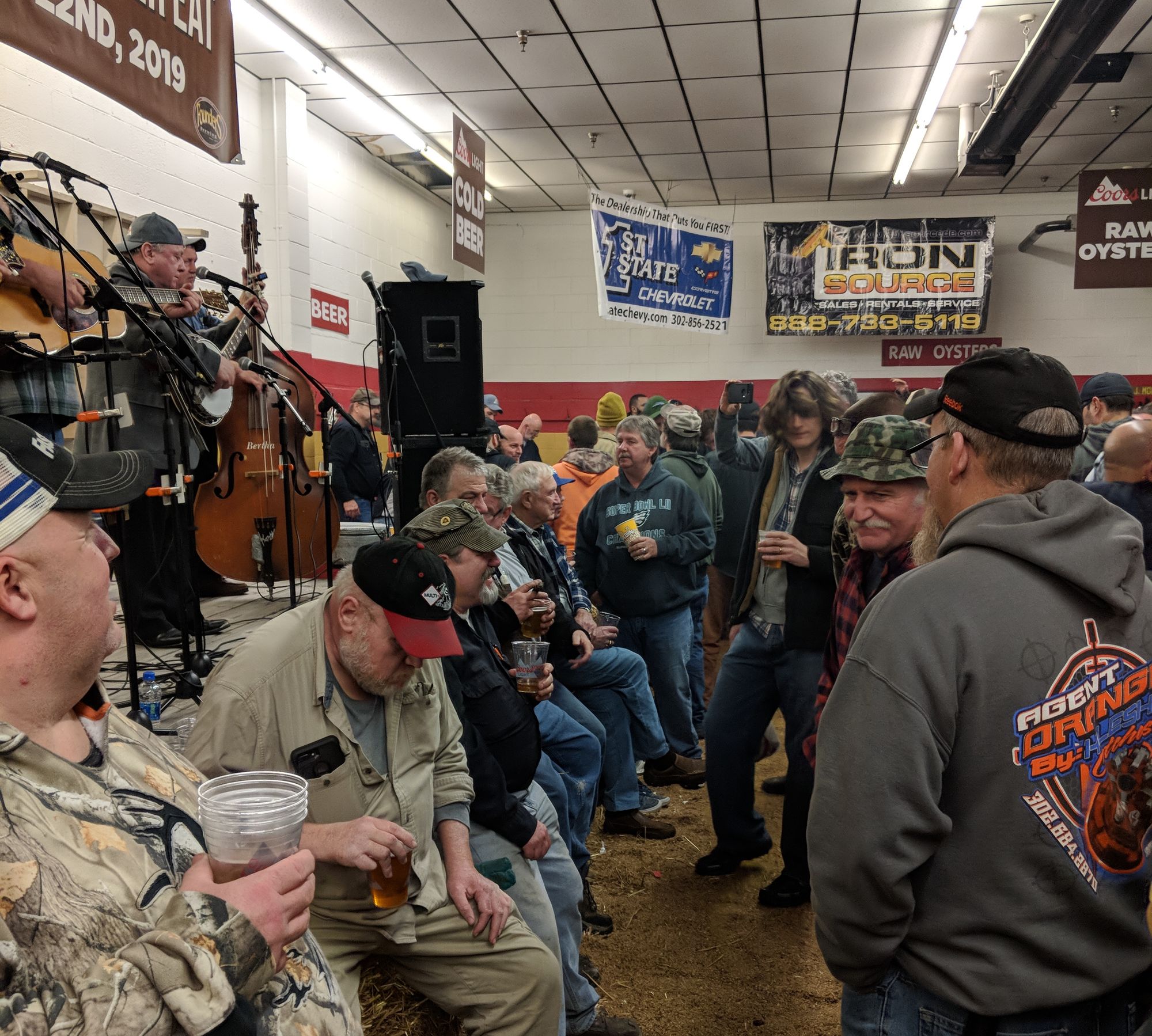
It does take a toll
Four hours is a long concert, although Sapp said playing the Oyster Eat seems to go fast. But it’s not easy.
“It was quite the marathon,” Valiquette said.
Sometimes, they would play another show the next night.
“You walked out of the Oyster Eat, you can barely talk,” Valiquette said, “so you spent the rest of the day Saturday resting your voice so that you could at least sound halfway intelligent” for the next performance. “It got to be a real trick sometimes.”
They would get to the firehouse at about 4 p.m. to set up for the show, Valiquette said. Afterward, they had to pack up quickly.
Long said after the Oyster Eat was over he would usually take Sapp back to his store in Elkton, a drive of an hour and a half or so, before heading to his own home in Jarrettsville, Maryland. “I usually get home around 3:30 in the morning,” he said.
“It’s a long night,” he said, “but it’s worth it.”
Why they stepped down this year
After a run of more than 30 years, the band made the tough decision not to play this year’s Eat.
Sapp said he had a death in the family that “knocked the wind out of my sails, so I thought I better just drop back for a while and regroup.” He also said he was concerned about COVID.
Some of the band members are also in their 70s now.
“We were all getting a little older, it was getting a little harder every year to get the sound gear up on the wagon,” Valiquette said, “and also the tear-down.”
However, fans might not have heard the last hurrah of Dean Sapp and the Harford Express at the Oyster Eat, as Sapp is open to playing the event again in the future.
He did have one small complaint, though: They’ve never been immortalized on the Oyster Eat’s traditional commemorative cartoon T-shirt.
“They put everybody and their brother on those T-shirts. Danny Paisley played there one year (when Sapp’s band couldn’t make it); he was on the T-shirt. We’ve been there 30 some years, have never been put on a T-shirt,” Sapp said.
Despite that, the band spoke fondly of their time there.
“I’ve never regretted ever getting that job. Never regretted it,” Sapp said.
“We made a lot of friends down there,” Valiquette said.
“Performing is the biggest high you can get, better than any drug you’ll ever take,” Sapp said. “And if it’s a good night, where the crowd is really into what you’re doing, there’s nothing that can explain it. It’s just so gratifying.”
More stories:
